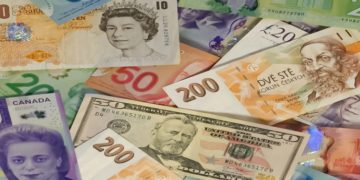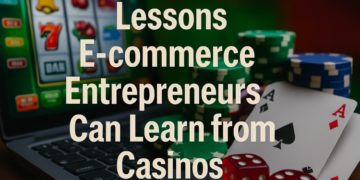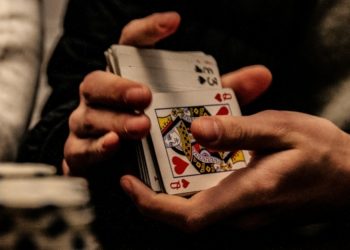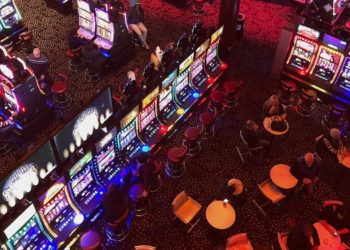Every bet placed online carries a mathematical story behind it. Odds, volatility and return-to-player rates are not just statistics—they are decision-making tools. The difference between a random spin and an informed wager lies in understanding how those numbers translate into risk and opportunity.
Foundation of Casino Odds
Odds in gambling express the likelihood of a particular outcome. In casino terms, they represent the ratio between the chance of winning and losing. For example, European roulette has 37 pockets—one zero and 36 numbers. The chance of hitting a single number is 1 in 37, giving odds of 36 to 1.
At Vegas Hero Casino, players can view transparent RTP percentages on every slot and table game. These figures indicate the long-term expected return, helping users compare fairness across titles. A 97% RTP slot theoretically pays back €97 for every €100 wagered over time, though variance affects short-term results.
House Edge and RTP Connection
House edge is the casino’s built-in advantage. It’s the percentage of every bet the casino expects to retain. RTP (Return to Player) is simply 100 minus that percentage. For instance, a blackjack game with a 0.5% house edge offers an RTP of 99.5%.
Games like baccarat (98.9% RTP) and European roulette (97.3% RTP) give players more consistent outcomes than slots with higher volatility. Understanding these differences is crucial for structuring betting strategies that align with personal risk appetite.
Decision Framework Pros Use
Professional and strategic players rely on a simple three-step framework: Analyze, Adjust and Act. It turns mathematical odds into actionable decisions.
- Analyze the numbers – Evaluate RTP, volatility and payout frequency.
- Adjust bet size and pace – Adapt playstyle to bankroll limits and variance.
- Act with discipline – Stick to predefined rules and avoid emotional betting.
This approach blends mathematics with behavioral consistency. Below is how each part of this framework translates into practical gaming choices.
Analyzing the Numbers
Every casino game publishes a theoretical RTP and volatility rating. Slots such as Book of Dead (Play’n GO) offer 96.21% RTP with high volatility, meaning long dry spells between big wins. Conversely, Starburst (NetEnt) features 96.09% RTP but low volatility, offering frequent smaller payouts.
Here’s how to interpret key indicators:
| Metric | Description | Typical Range | Impact on Play |
| RTP | Expected return to player | 85%–99.9% | Higher means better long-term value |
| Volatility | Risk level of payout swings | Low–High | Higher volatility means bigger but rarer wins |
| Hit Frequency | Likelihood of any win | 15%–45% | High frequency offers more steady play |
| Max Win | Largest possible payout | 500x–100,000x | Indicates top-end risk potential |
Analyzing these values before playing creates informed expectations.
Adjusting Bet Size and Pace
Once the odds and risk profile are understood, the next step is adjusting bet size and session pacing. Pros rarely bet more than 1–2% of their bankroll per round, ensuring sustainability across sessions.
For example, with a €500 bankroll, bets should stay within €5–€10. If volatility is high, players reduce stakes further to survive extended losing streaks. In low-volatility games, slightly larger bets are safer since variance is limited.
Rhythm of Betting
Professional players structure sessions in blocks of 50–100 bets, reviewing results between cycles. This technique mirrors portfolio management—rebalancing exposure based on performance.
Casino operators provide statistics dashboards that display average wager size, wins and losses per session, helping users adapt in real time.
Acting With Discipline
Numbers only work when applied consistently. Professional gamblers often describe discipline as their true edge. Every decision—whether to continue, pause or stop—is rooted in pre-set limits.
A simple yet powerful rule is the Stop-Loss/Stop-Win Principle:
- Stop-Loss: End play if losses reach 20% of bankroll.
- Stop-Win: End play after gaining 30% profit.
This rule prevents emotional chasing and locks in success during favorable streaks.
Probability in Real Decisions
Consider two options in European roulette: betting on a single number (2.7% win chance) or red/black (48.6% win chance). A risk-averse player might prefer the latter despite lower payouts. A high-risk player might combine inside and outside bets for hybrid exposure.
Odds don’t dictate decisions—they inform them. Each strategy reflects personal tolerance for variance, not just mathematical optimization.
Understanding Game Volatility
Volatility, or variance, defines how a game distributes wins. Two slots can have identical RTP yet deliver completely different experiences.
High-volatility slots like Dead or Alive 2 can go 100 spins without a hit, then deliver a 10,000x jackpot. Low-volatility slots like Twin Spin produce frequent small wins, ideal for longer sessions.
Below is a simplified volatility comparison for reference.
| Game Example | RTP | Volatility | Player Type |
| Starburst | 96.09% | Low | Casual, low-risk |
| Book of Dead | 96.21% | High | Moderate risk-taker |
| Sweet Bonanza | 96.51% | High | High variance seeker |
| Big Bass Bonanza | 96.71% | Medium | Balanced player |
Choosing volatility aligns your expectations with bankroll endurance.
Probability and Expected Value
Every bet has an Expected Value (EV)—a projection of long-term profit or loss. Professionals use EV to decide which bets are worth taking.
The formula: EV = (Win Probability × Win Amount) – (Loss Probability × Loss Amount)
For instance, betting €10 on red in European roulette:
- Win chance = 18/37 ≈ 48.6%
- Win amount = €10
- Loss chance = 51.4%
- EV = (0.486 × 10) – (0.514 × 10) = –€0.28
This means every spin costs roughly €0.28 in the long run—the house edge. Understanding EV helps players quantify the cost of entertainment and select games with the smallest negative expectation.
David Prior
David Prior is the editor of Today News, responsible for the overall editorial strategy. He is an NCTJ-qualified journalist with over 20 years’ experience, and is also editor of the award-winning hyperlocal news title Altrincham Today. His LinkedIn profile is here.












































































